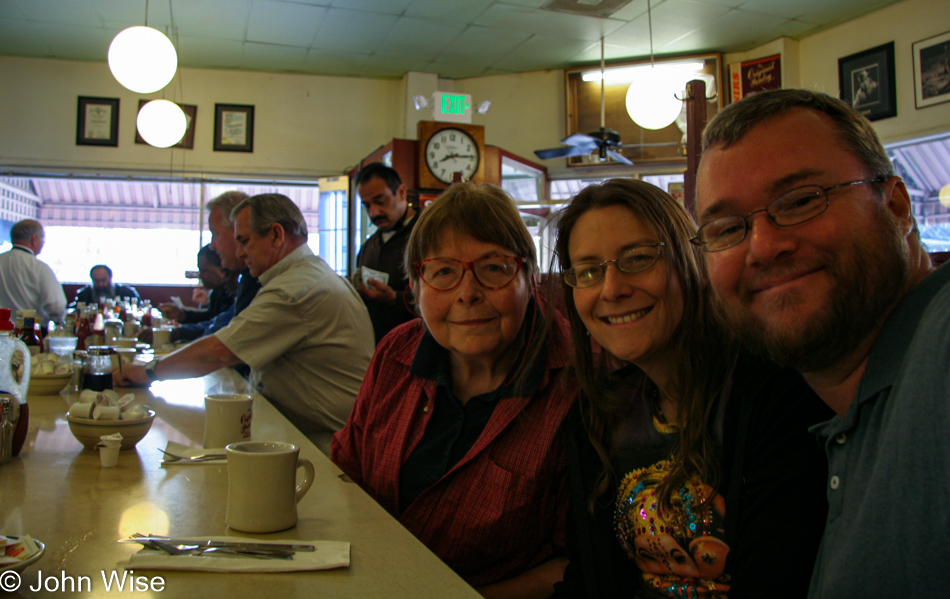
Those traditions that rarely change have worked on me one more time, drawing us into The Original Pantry Cafe in downtown Los Angeles. It’s not really about the quality of food that pulls at me but the nostalgia and authenticity of the old-time diner.

With some time to spare before our scheduled tour began, we drove around downtown looking for whatever, and here we found it at the Coca-Cola bottling plant on South Central Avenue.
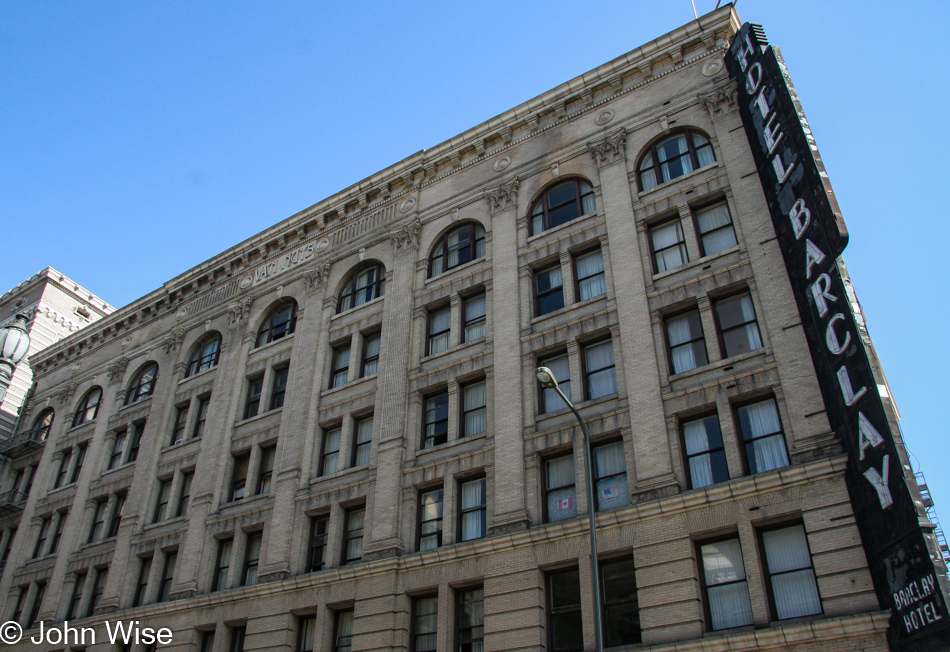
I had booked a walking tour through Downtown Los Angeles with the Los Angeles Conservancy to introduce us to the Art-Deco influence on the city.
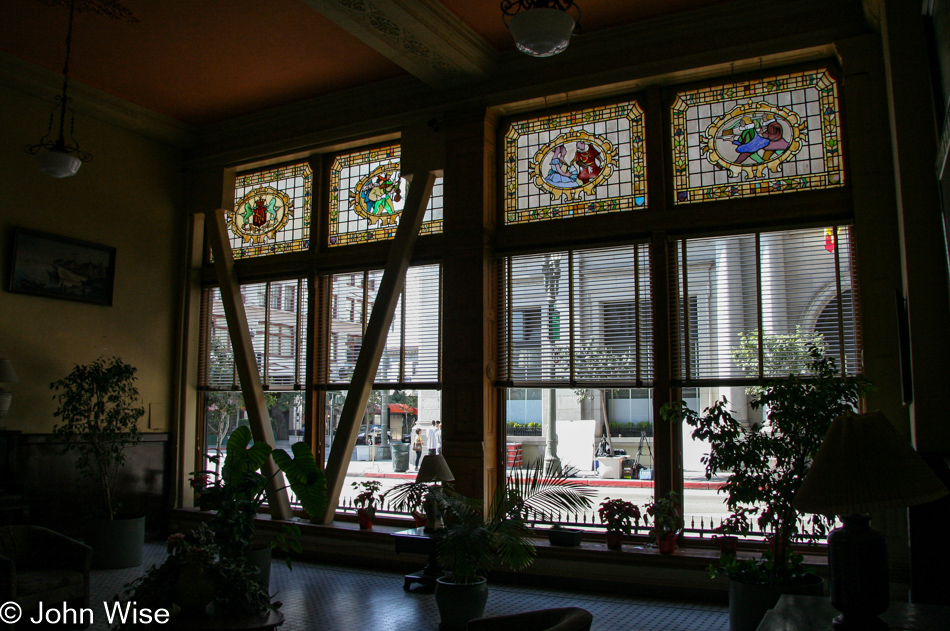
A nice surprise I’d not expected that we were given the opportunity to visit the interiors of some of the buildings we were learning about.
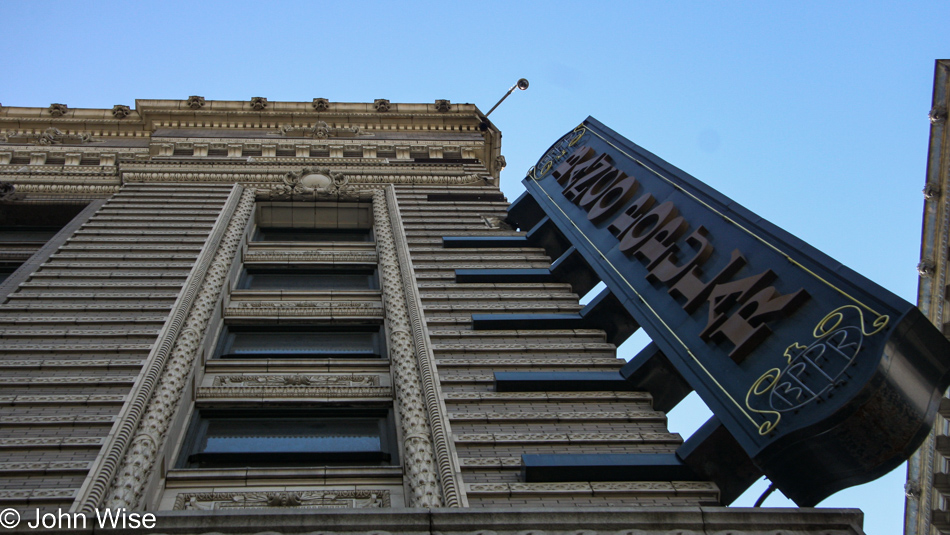
Sadly, I didn’t keep notes about any of this, and, short of researching the locations on the internet, I have nothing else to share besides the images of our walk around downtown.
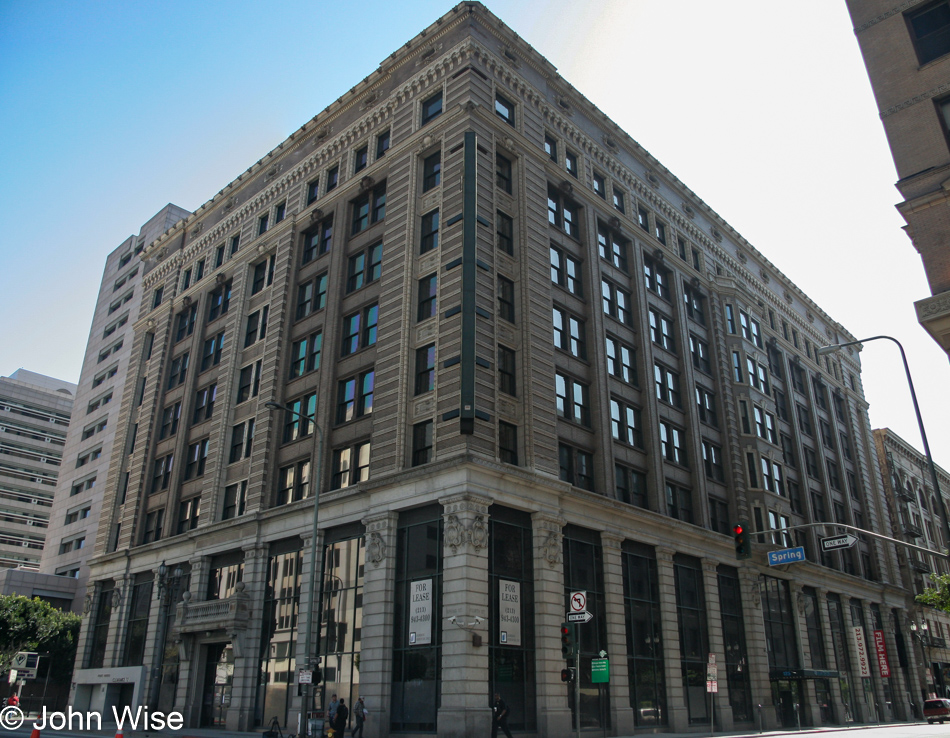
With little else to share aside from these images, maybe I should have chosen fewer so I could avoid this sense of obligation to write something.
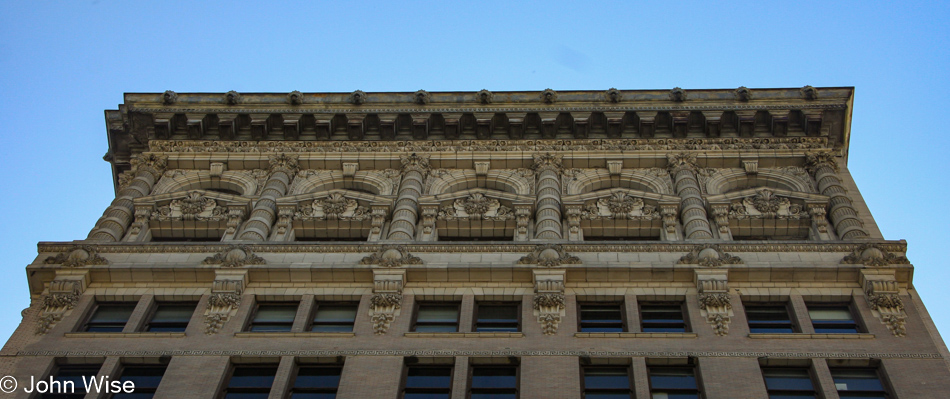
Well, that wouldn’t have worked as it was difficult enough to only go with the ones you are seeing; I could have easily included ten more photos, maybe more.
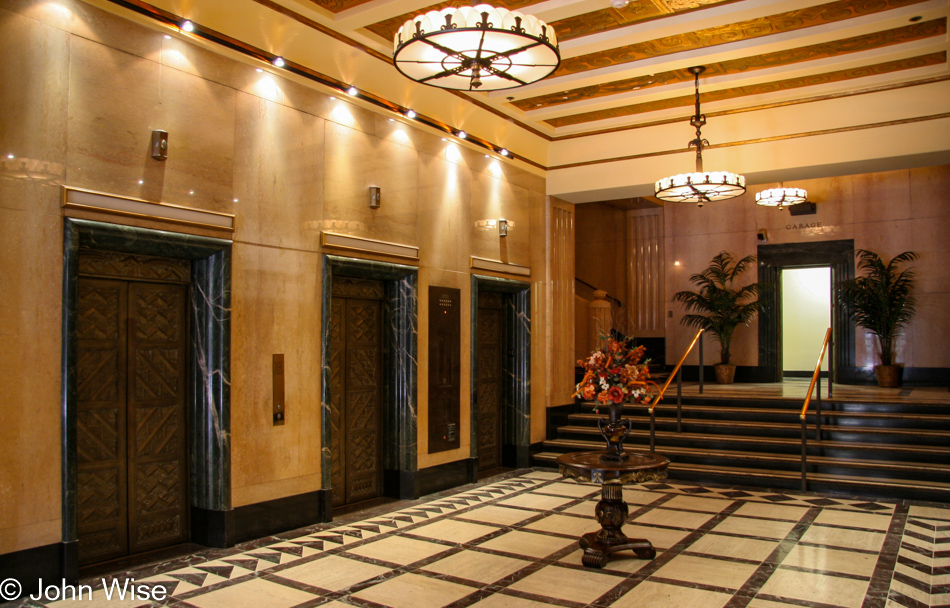
Back when labor and material were cheaper it was easier to invest in enduring, ornate architecture instead of the bland plastic utilitarian ugly that permeates modernity.

Detail of the ceiling area.
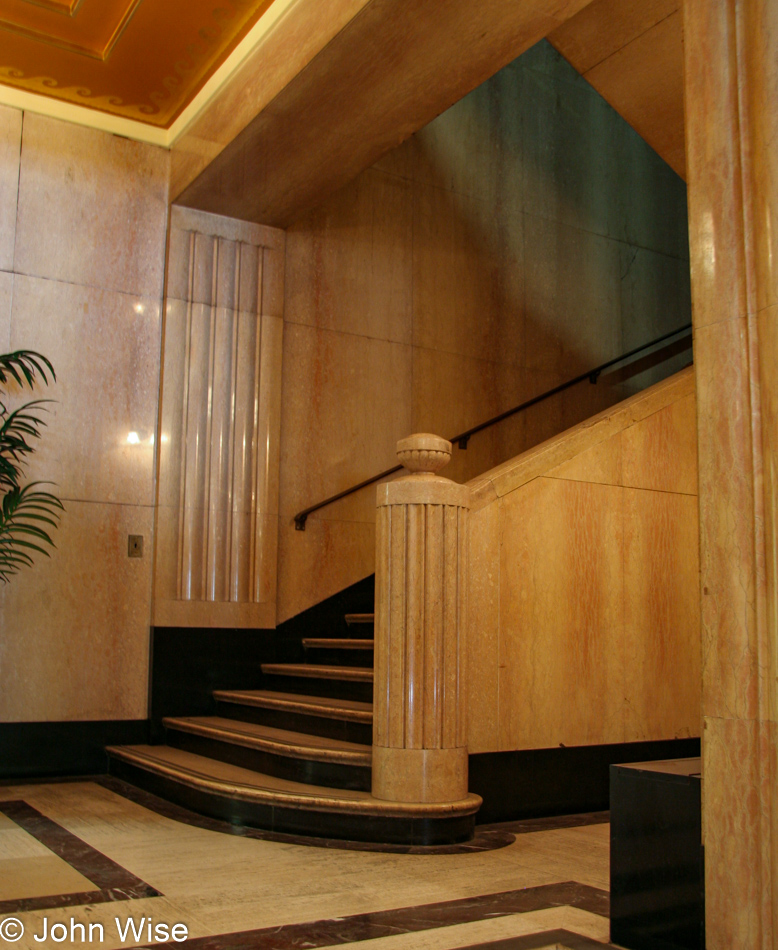
The stairs head up in the same building from the two photos above.
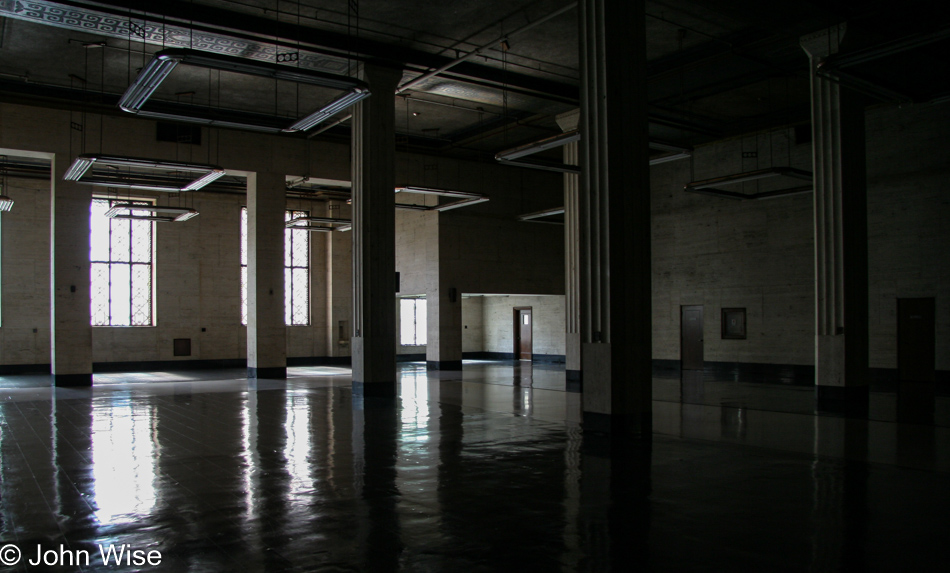
I believe this was a former bank. Some of these places that remain empty are occasionally used as film sets – this is Los Angeles, after all.
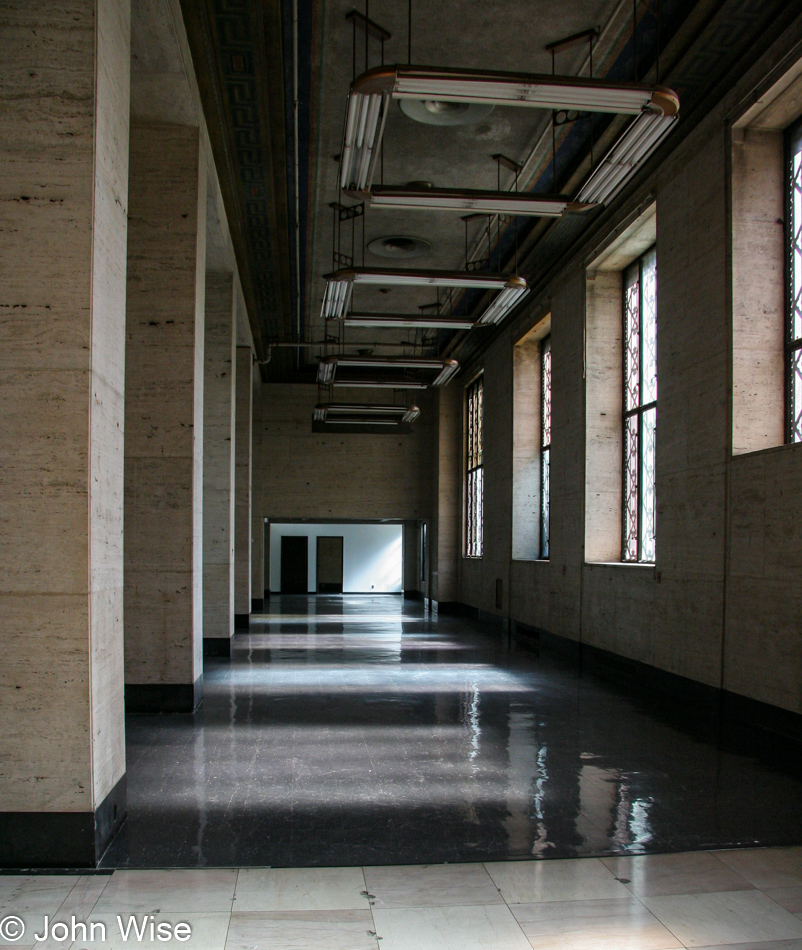
Same building, different view.
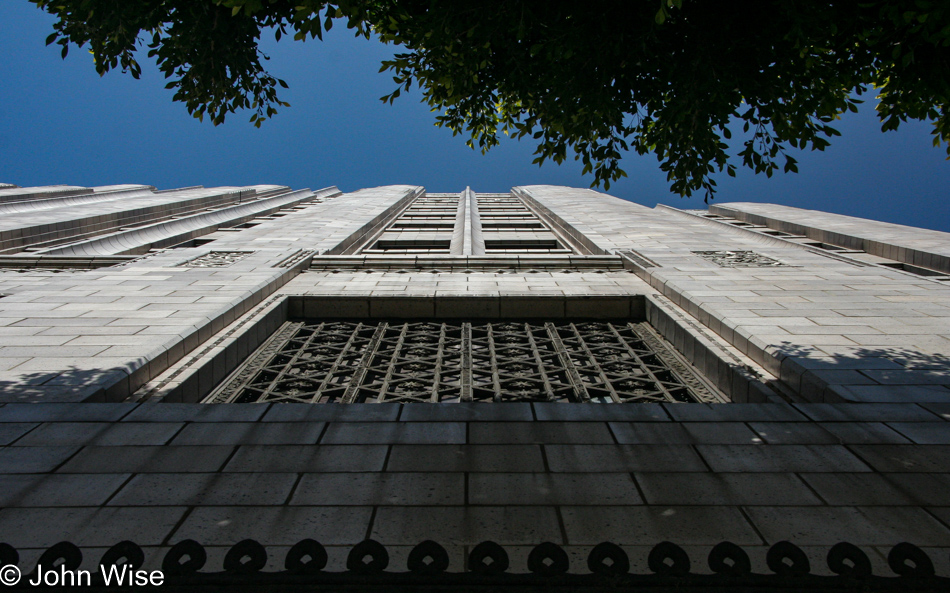
Back in the “Good Old Days” big money was invested in big architecture so the rich person was immortalized for all to see. Search for “Carnegie Library” on Google for examples of this. Today, wealth builds large private homes, giant yachts, and stuffed garages with a horde of expensive and rare cars.
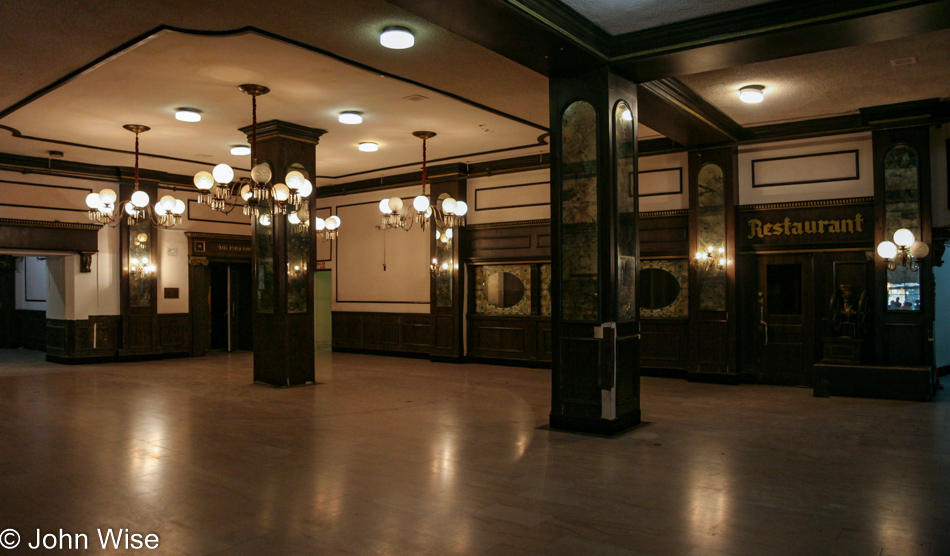
This could be a scene out of a location in Germany.
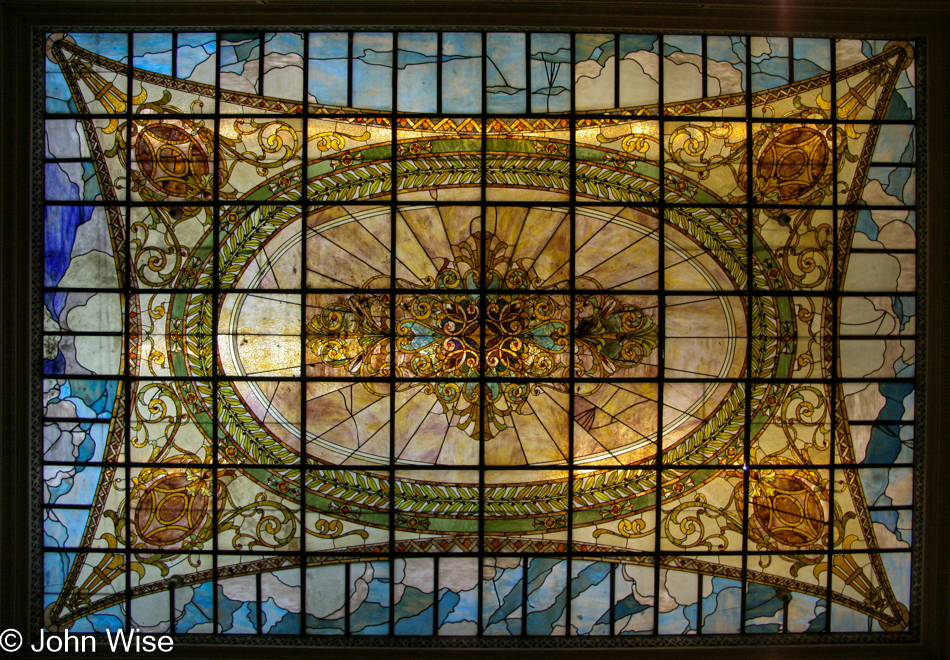
I’m feeling about as dumb as this skylight and far less beautiful as I struggle to find something to say about it.
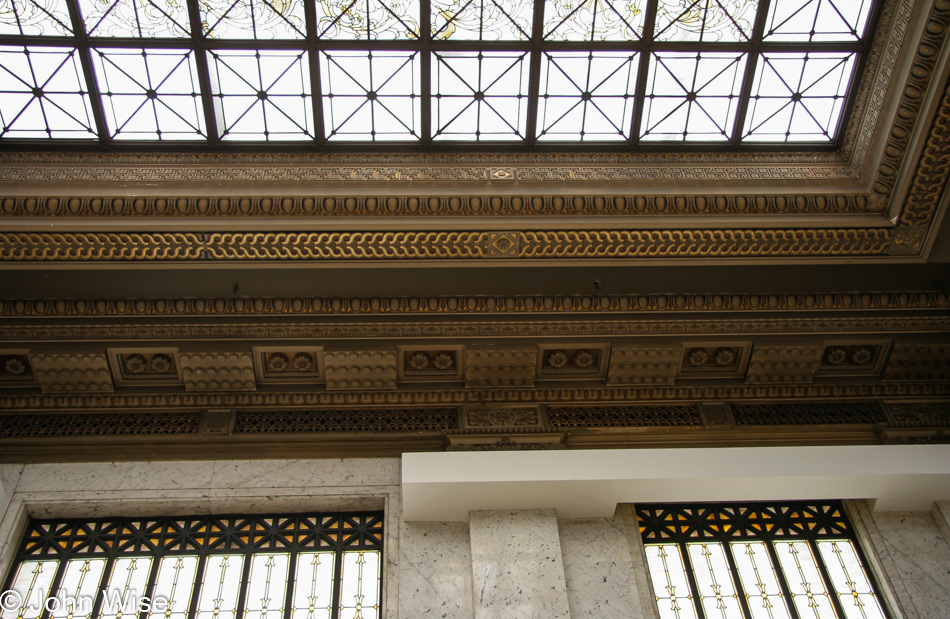
To walk through the streets of L.A., which I’ve done more times than I can count, you’d be excused if you failed to notice things such as I’m sharing in these photos as it’s easy to be overwhelmed by the depravity and decay that oozes over the downtown area.
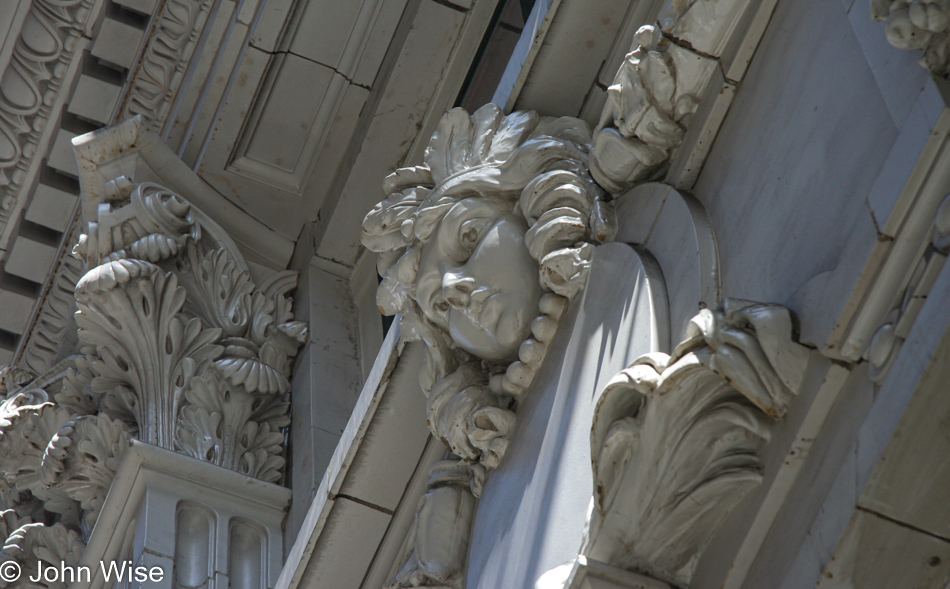
Maybe the group dynamic is helpful for enabling you to slow down and gaze at the details you won’t see when you are afraid to linger lest someone else notice you are acting like a tourist and vulnerable to being robbed.
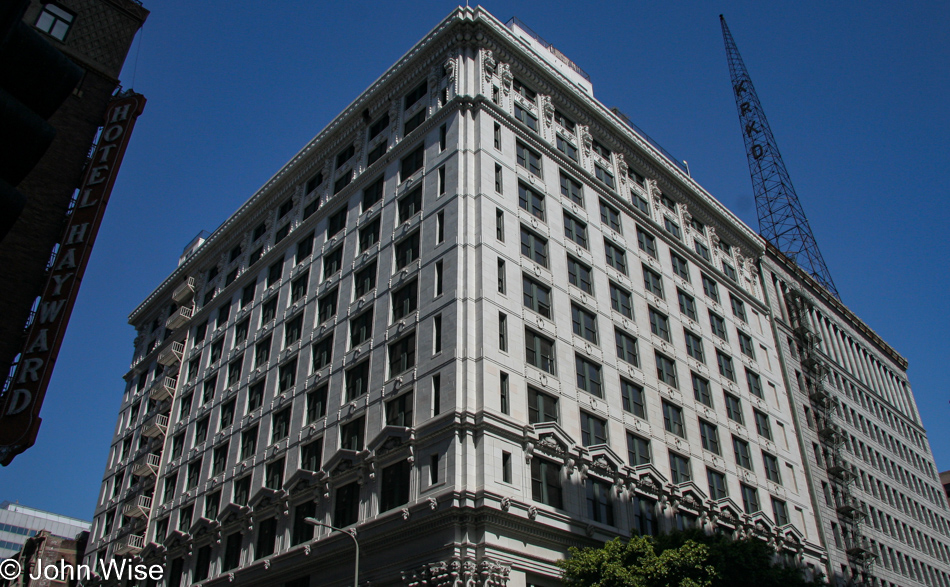
Couldn’t have asked for better weather for a walk, but we’re starting to get hungry again.
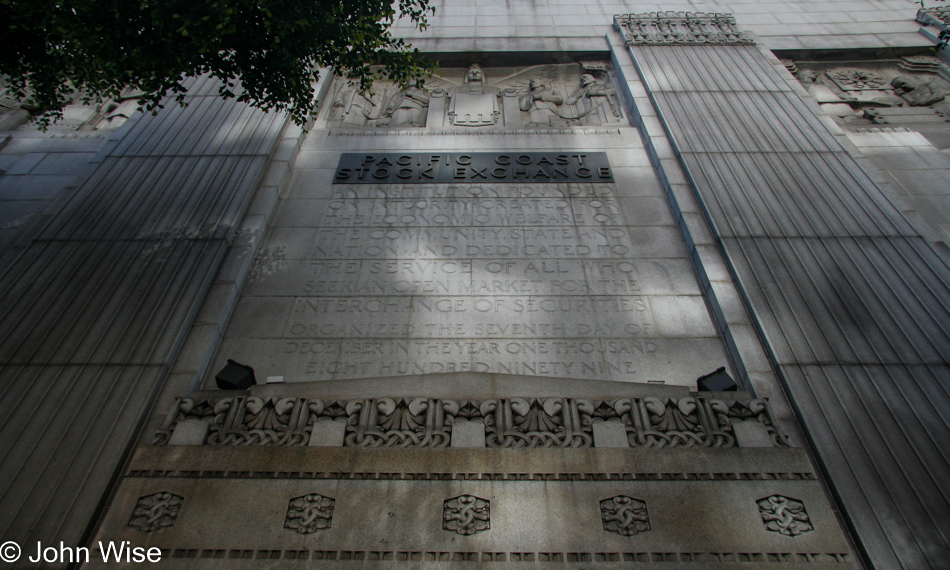
Back when I was an early teen wandering these streets, was I really so distracted by the hookers, winos, loony conspiracy theorists, homeless people, and such to not notice these things, or did I simply not care about the entire picture?
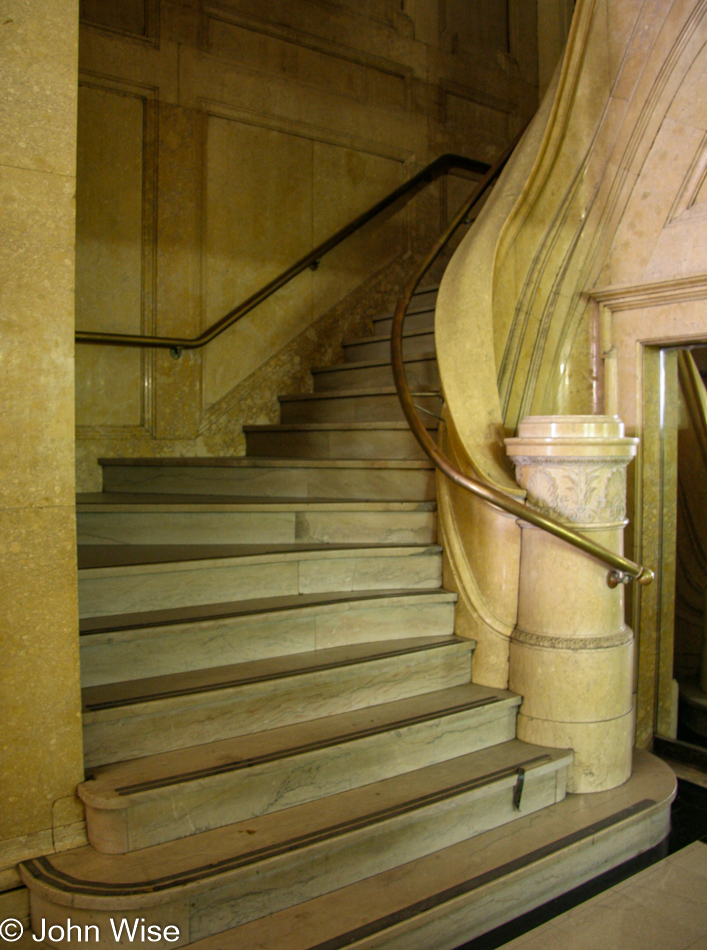
There were many more sights on this tour where the photos simply looked horrible, but it was a great investment of $15 each for a nearly 2.5-hour tour through a small corner of the history of Los Angeles. I’d gladly do this again.
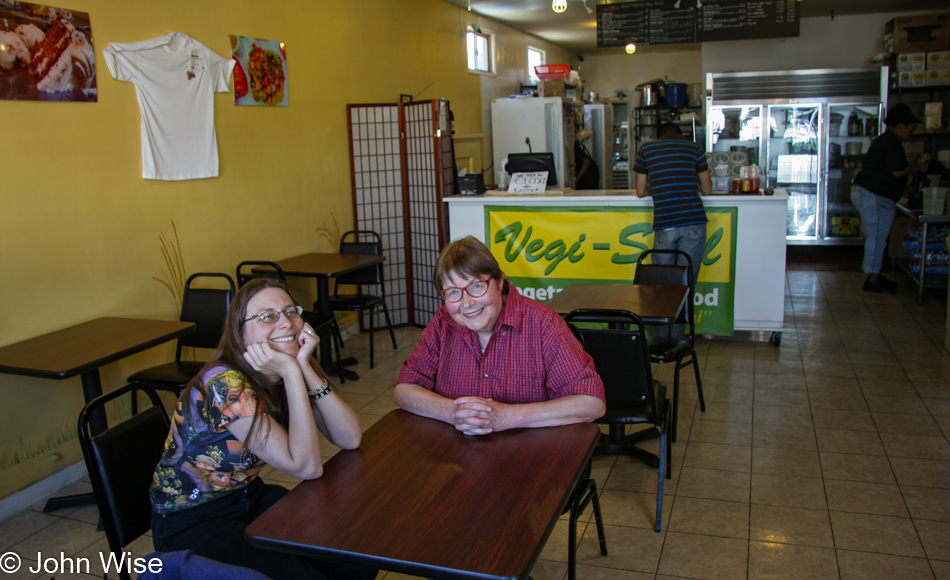
Stretching out and trying new things by stopping in at Vegi-Soul Restaurant here in downtown.
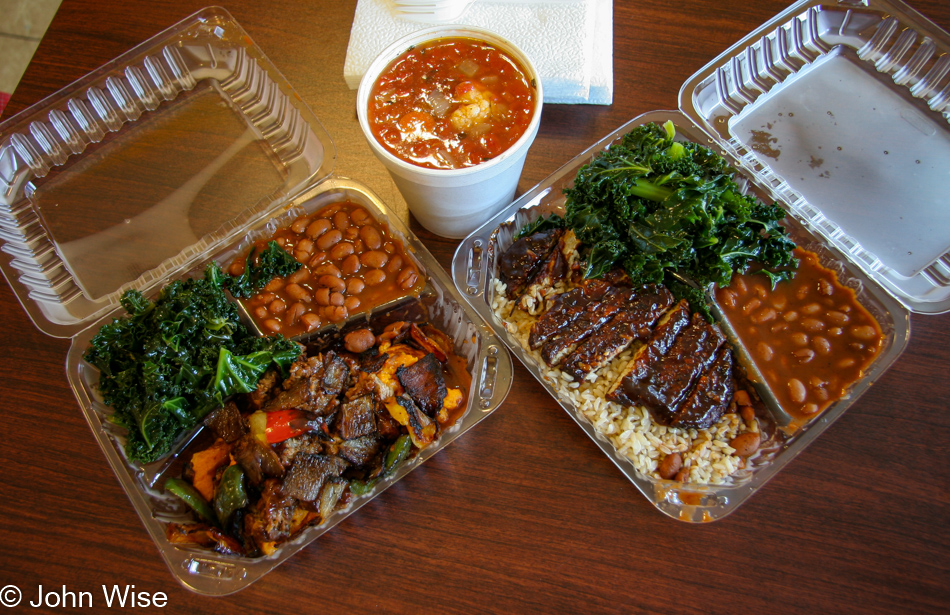
I can’t say I’d ever heard of vegetarian soul food before, so this sounded like a perfect option for lunch.

A short drive of fewer than 8 miles was all that was required to bring us to our next destination.
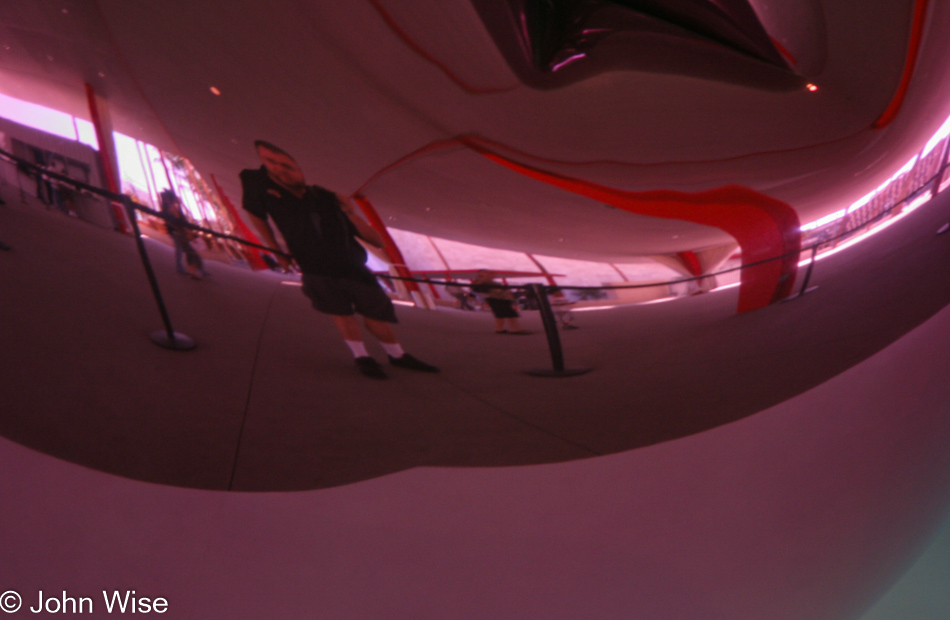
The Los Angeles County Museum of Art, a.k.a. LACMA, is where we’ve decided to spend the next part of the day.
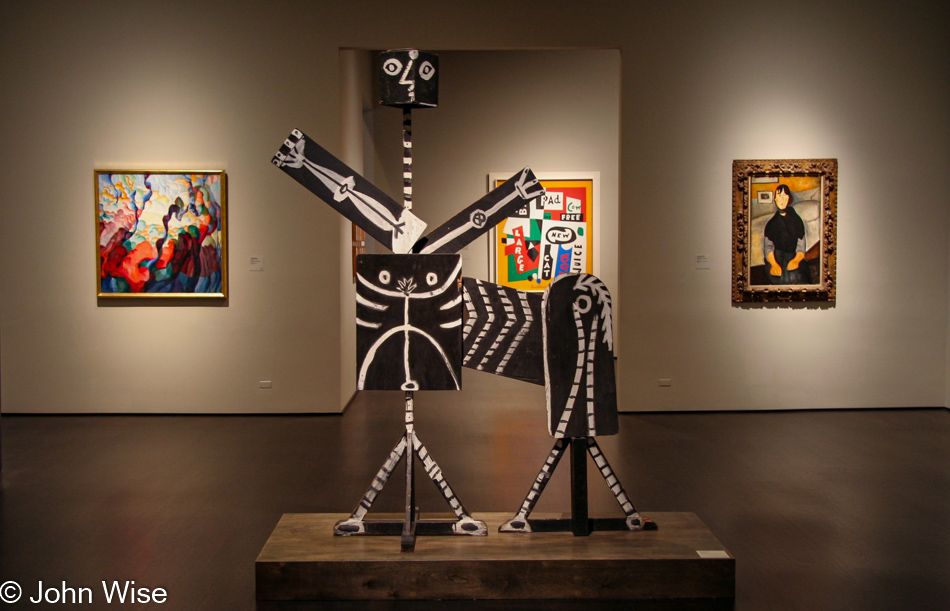
Art is what’s to be observed here in many of its myriad forms.
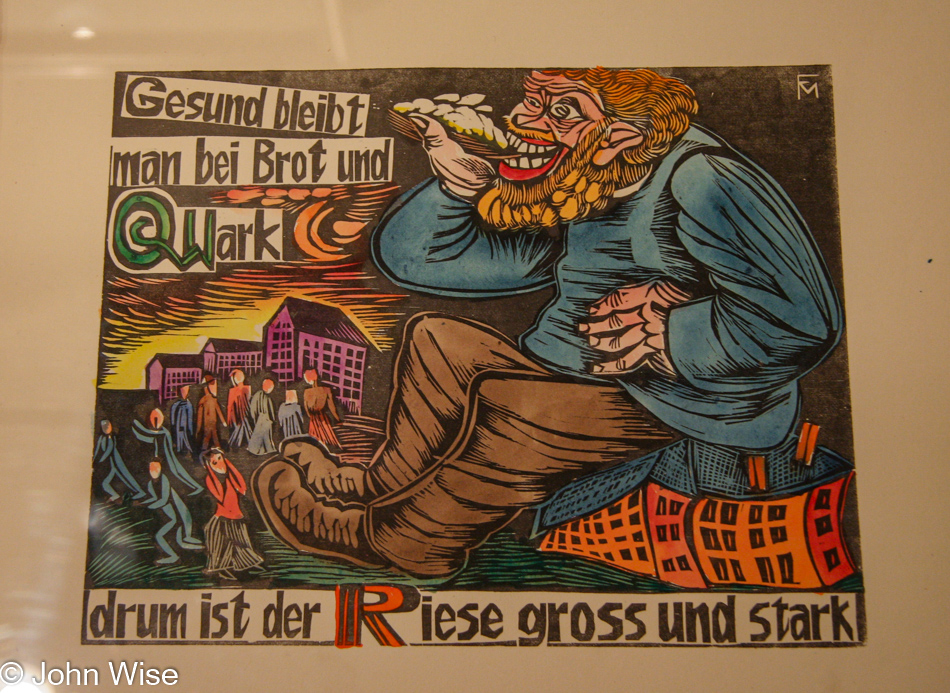
The first piece to catch our eyes, due to its obvious Germanness, was this painting from the German expressionist Conrad Felixmüller. The German words mean: “You stay healthy with bread and quark – that’s why a giant is big and strong.”
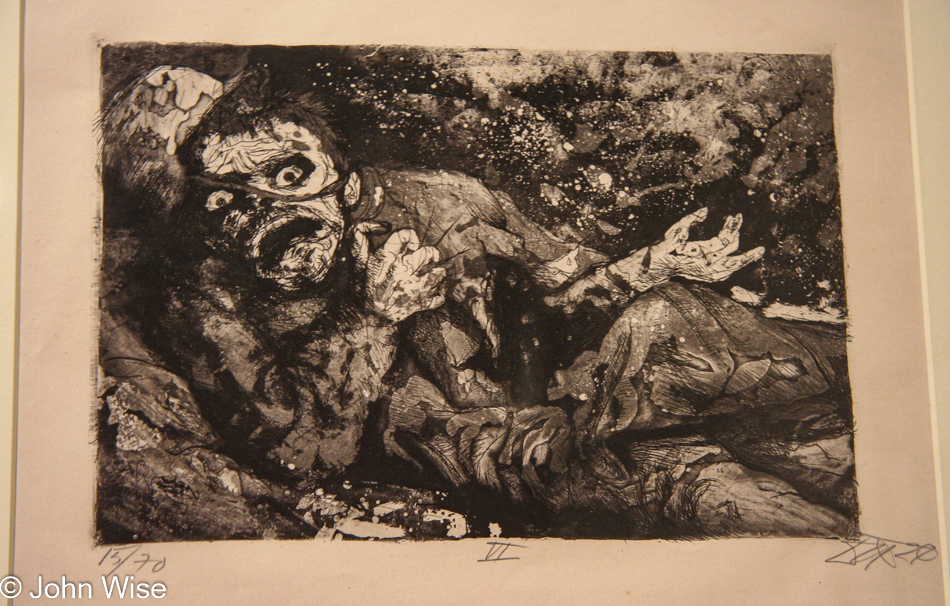
I needed zero verification that this work was from one of my favorite artists, Otto Dix. It was abundantly obvious, though I’d never previously seen this piece. It is titled Wounded Man.
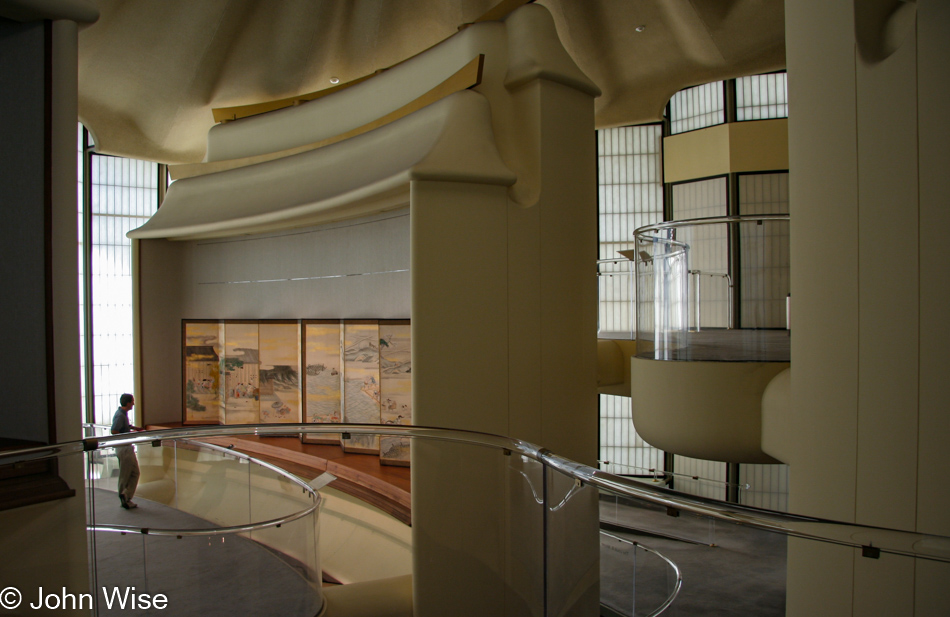
Now, over to the Japanese Pavilion as we are here to see an exhibit of Asian art we’ve never visited before.

Notes of what’s what or maybe if I’d taken photos of the placards that explained the pieces would have been helpful, but Caroline does remind me that the Japanese Pavilion houses a great collection of netsuke, miniature carved figurines that allowed kimono-wearing folks to attach small pouches or boxes to their clothing that traditionally had no other pockets.

There was a lot more to the exhibit, but it was these tiny pieces that I enjoyed the most.
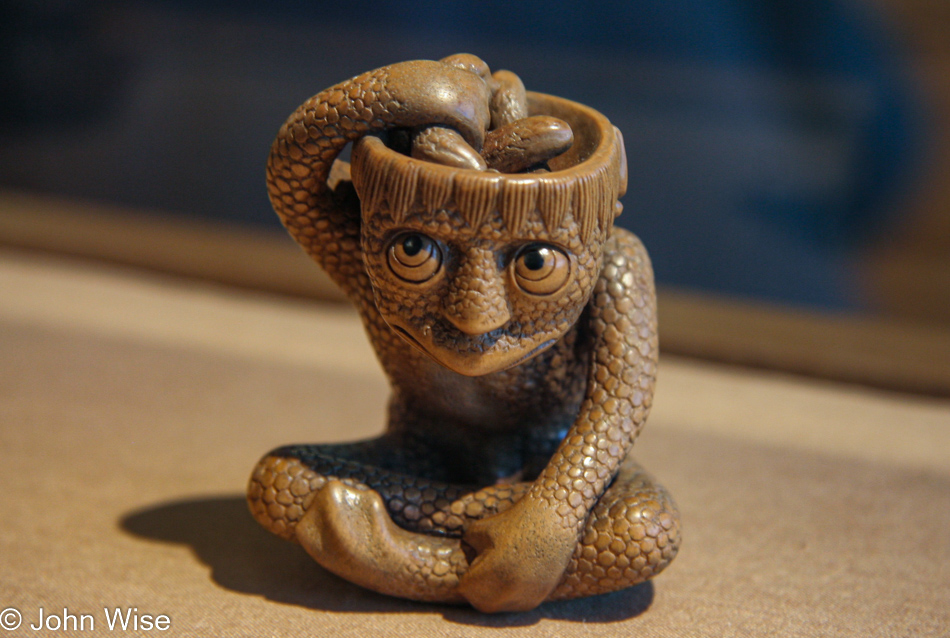
Are those pickles in my head?
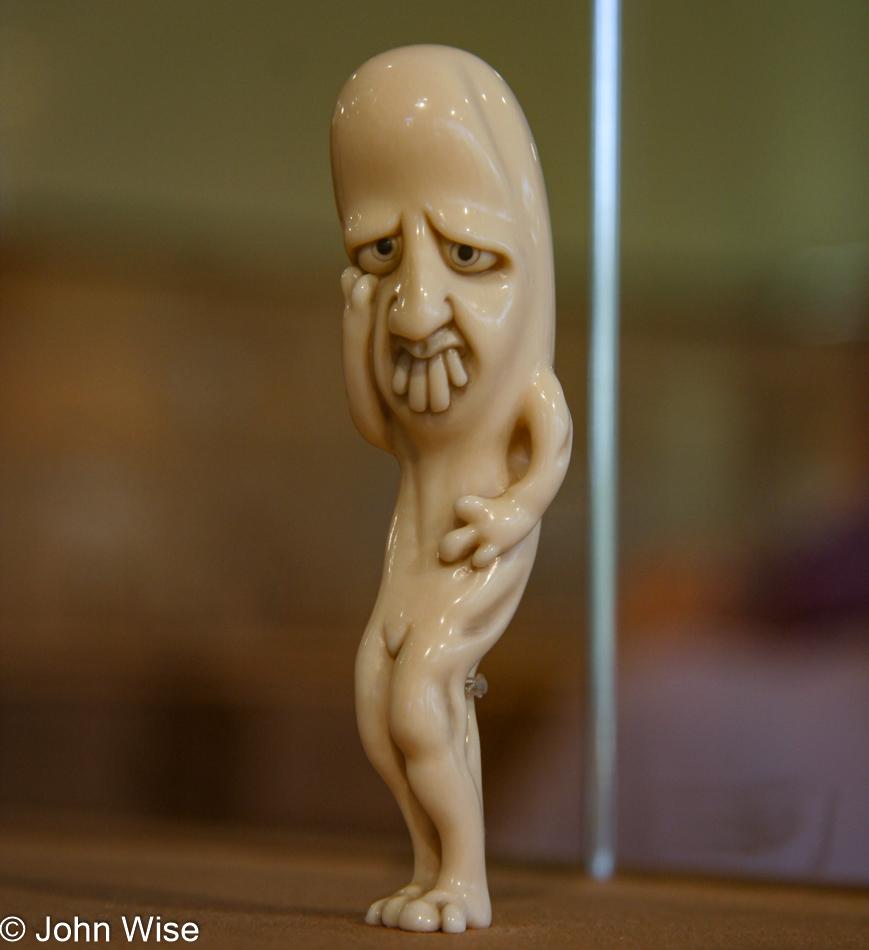
Is this the feeling of uncertainty?
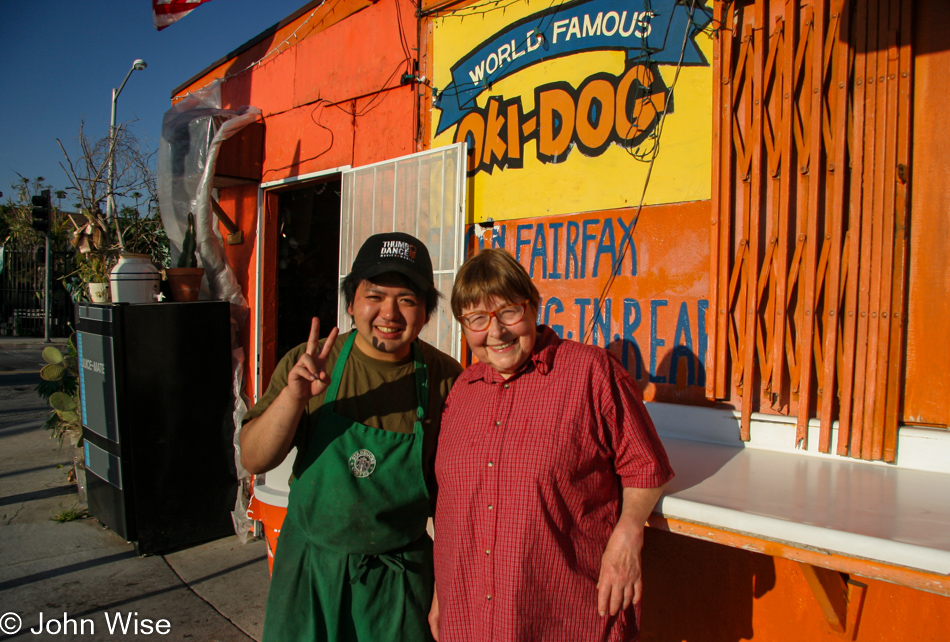
Dinner was at Oki Dog here on Fairfax, just a couple of miles from the museum. While I have enough photos of this landmark from my youth, this one is special as the guy who made our food heard me talking to my mother-in-law and exclaimed that he had the same name. Well, the same name as it’s spoken but with a different spelling; his name is Yuta and is Japanese, while Jutta is obviously German; we all thought this was funny.